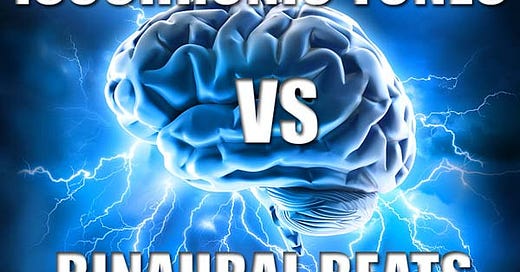Horses Don't Stop
Some songs are endless. Considering work by Caroline Polachek, Skillibeng, Lee “Scratch” Perry.
We have listened to music in new ways the last few years. Music is changing because it changes of its own accord. Streaming platforms have also changed the way people produce and consume sound. As a type of information, “content” is distinguished more than anything by its disposability, and streaming platforms push content. Content is designed to be forgotten – it barely exists. The normative creep of on-demand music has spawned all kinds of complex downstream effects, leading to novel stylistic mutations alongside changes in the affective texture of the collective unconscious.
These days, when I find a song I really like, I listen to it on repeat for an hour. I might listen to it on repeat again the next day and a couple days after if it continues to resonate. When I find something I really connect with, I remember that horses don’t stop, they keep going, and I want my experience of the music to be relentless. I’m not alone in this practice – on YouTube there are countless hour-long loops of popular songs. I never used to listen to music on repeat because I didn’t want to spoil my enjoyment through overexposure. I’m less precious about music now than I was five or ten years ago, but I can also sense changes in the sounds I consume. Recent songwriting forms intended for popular consumption are functionally optimized for their inexhaustibility.
Streaming makes it harder for listeners to establish an intimate relationship with the music they consume. When sound is transformed into impersonal content – alphanumeric characters on a ledger – it is profoundly devalued. The user is always being shuffled along to the next unsolicited recommendation, sponsored playlist, or advertisement. For the app to be truly successful, music must be unsatisfying. The user should always be exploring and discovering something new.
Music is instrumentalized by the all-encompassing project of content discovery – which is itself a front for the pursuit of distraction – and it is effectively rendered a supplement along the lines of a CBD lemonade. Streaming withholds albums and songs, replacing them with mood treatments and psychic directives. Binaural beats have organically emerged as the sublime of our little content-world, unambiguously claiming to facilitate healing, positive energy, and focus. Binaural beats fulfill the same desires that a Queen song or a concentration playlist – “Lofi Beats To Study To” – might fulfill in a slightly more roundabout way. In my interview with Bladee and Mechatok, the producer offered the following: “Once you start looking at music as something that can fulfill a certain need or desire, it starts becoming the same dopamine you get from gambling or something … Maybe it doesn’t even have the advertised function; maybe it’s a placebo.”
Drugs wear off. How might music challenge the parameters of its own disposability? It is tempting to say that it cannot, but it sort of can. Some artists might contend that the spell of commodity fetishism can only be broken thorough the production of difficult, “experimental” music. By challenging the listener, this music might defamiliarize the everyday conditions of so and so and etc. Alternatively, music might find a way to infinitely suspend itself and never end. Something is only disposable if its beholder is done with it. Songs exhaust themselves when they resolve and fulfill their purpose. But what if a song could not be fulfilled? It could never be disposed of, and even if it was discarded, it would still live on.
Certain terrific songs that do not lend themselves well to repeated listens unless a listener is extremely depressed or going insane. Adele’s “Someone Like You” for the former, the New Radicals’ “You Get What You Give” for the latter. These songs, like most songs, more or less stick within the purview of a single mood: ruminative, celebratory, whatever. If a song is only in the key of one mood, though, it is ultimately more disposable. All moods are eventually exhausted by life and history. Songs that sound good on interminable repeat, which I’ll call endless songs, generally do not fit the one-mood rubric. They channel and cultivate many moods at once.
The distribution of mood-intensity in pop tends to resemble familiar narrative structures: songs are more intense in some sections, and less intense in others. Below is an outtake from the aforementioned interview, where Mechatok discusses songwriting forms:
Traditionally, pop is this very show business thing. You have these dramatic moments that suggest classic narrative forms basically: an opening, a peak, and then a low point. You might have noticed with these songs, they do have their sections, but to some extent they the antithesis to a Queen song that will have a big solo and then a quiet piano part.
While it can be exhilarating to encounter a song’s most intense main section during the first few listens, after a while it begins to take a psychic toll. The listener might initially gain energy from a song, but before long it starts to drain them because it lacks self-sufficiency. The song works perfectly in a playlist or a mix but it flounders if stranded in an anechoic chamber. Endless songs thrive in anechoic chambers: the equilibrium of their psychic dynamics is only ever isomorphic with a level.
In Stephen McAdams and Albert Bregman’s 1979 article “Hearing Musical Streams,” they describe timbre as “the psychoacoustician's multidimensional wastebasket category for everything that cannot be qualified as pitch or loudness.” Endlessness as a subset of exhaustibility, which sits in the wastebasket as well. It’s time to take out the trash.
What makes a song inexhaustible? It must be even-keeled, unshakably steady. It must be frictionless, but not too frictionless, otherwise it evaporates and is nothing. A song must be something in order for listeners to listen to it, and it is impossible for a song to assert its own being without generating friction in the process. Where does this friction go? Desire never resolves in an endless song, so it goes in a circle forever. It’s not a tax, it’s a positive thing. Bach did not annotate his works with dynamic marks to indicate loudness and softness, the composition’s internal energy balance. He let us figure it out.
Endless music has existed before. It’s crucial here to identify echoes of the first principles of Jamaican dub: a piece of music never ends, it can be remixed forever, each song contains kernels of millions of other possible songs and vice versa, music is irreducible and infinitely regenerative. Rest in peace Lee “Scratch” Perry.
Some recent endless songs:
Caroline Polachek, “Bunny is a Rider”
Marcy Chin and Skillibeng, “Wul Night”
Oli XL, “Clumsy”
Shenseea, “Sure Sure”
Bladee and Ecco2k, “Wonderland”
Rich The Kid, Jay Critch and Skillibeng, “Real Boss”
Young Thug, “Digits”




